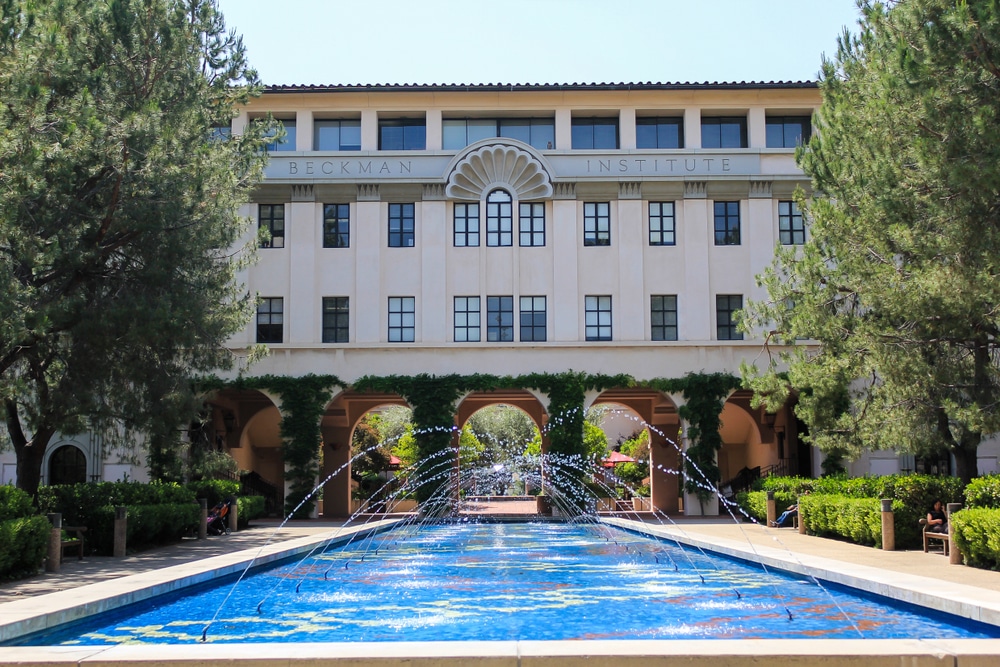Accepted to Caltech: Now What?
For students who are deeply interested in and passionate about science and engineering, there is absolutely no question that one of the very best schools in the world to attend as an undergraduate is the California Institute of Technology, more commonly known simply as Caltech.
For that reason, if you are a high school student who has recently been accepted to Caltech, then a major round of applause is earned for you and all your hard work! With that in mind, it is really important for students to remember that getting accepted to Caltech – or any college or university for that matter – is really just the beginning of a very long and exciting journey. And you can’t spend too much time celebrating before you are going to have to meet deadlines and get started on preparing for moving into your campus housing, attending your freshman orientation, and eventually attending your first class!
At AdmissionSight, we make sure that our students are not only prepared for what comes after getting accepted to a top school but how to get into those top schools in the first place! Though Caltech is not in the Ivy League and is about as far from the Northeast as you can get (located in beautiful Pasadena, California), it is absolutely just as hard to get into.
In fact, Caltech is considered to be just as, if not more competitive than MIT, Harvard and Yale!
At AdmissionSight, we make it our number one priority to prepare the many students that we work with every school year and application cycle for the many different stages of the application journey. After all, knowing what to expect and what it takes to get into these schools can give students a major advantage compared to those students who decide to go it alone.
While there is no way even the most accomplished and intelligent students to guarantee that they will get into the school or schools of their dreams, there are certainly tools and strategies that any student can employ to improve their chances of getting into even the most selective of universities and colleges.
The truth is that one of the most important things for any student to be aware of when it comes to the application process is the actual way in which a school carries out its own admissions process. Though every school is a bit different in terms of how it specifically carries out its admissions, the vast majority of schools value the same components evenly and are looking for specific characteristics in every student’s application profile.
That is where AdmissionSight can come in and help! Thanks to the experience and tools that our admissions consultants have at their disposal, the high school (or transfer) students that we work with every application cycle enjoy a major advantage over the typical student.
That is probably why 75.0 percent of the students that we have worked with have ended up getting into either an Ivy League school like Harvard, Columbia, or Yale or a top 10 school that is not in the Ivy League like Caltech, Stanford, or MIT. That success rate is even more impressive when you consider the fact that the vast majority of these schools boast acceptance rates that are either just above or well below 5.0 percent!
So, if you are wondering how Caltech admissions work or what to do after getting into Caltech, then you have come to the right place! Let’s break down the answers to those questions and much more together.
How do Caltech admissions work?
When it comes to how the admissions process at Caltech works specifically, students who are interested in applying to – and ultimately getting accepted to – this school has to know that the admissions officers and committee have incredibly high expectations. Caltech is quite different from many schools in the United States due to its intense focus on science, technology, engineering, and math – otherwise known as STEM.
Though Caltech does indeed utilize a “holistic” approach to their admissions process, which means that a school considers an applicant’s unique experiences and strengths along with their academic achievement, the school also makes it abundantly clear that academics reigns supreme when it comes to what admissions officers look at first when reviewing a student’s application.
“Caltech’s academic preparedness expectations for admissions are aligned with the breadth and depth of the academic lives of our undergraduates,” the school states. “Prospective students should first understand that their completion of secondary/high school work marks the beginning of their collegiate academic lives.”
The reason why Caltech takes academics so seriously, and perhaps even more seriously than the Ivy League schools, is because Caltech is looking for students who already have an incredibly strong background when it comes to the topics that they are most interested in.
Basically, Caltech is not in the business of teaching students the basics of science, math or engineering. They want students to be able to hit the ground running on more advanced and complicated topics within those fields. The admissions decisions at Caltech center around the committee’s confidence that a student will be able to succeed within the school’s highly rigorous academic structure in their first year and beyond.
Core curriculum preparedness
A major aspect of the Caltech admissions process revolves around the school’s Core Curriculum as well as the knowledge that students will eventually gravitate more towards courses that are specifically related to their major. For that reason, the school does expect a level of preparedness in all major subjects. Here are some expectations to keep in mind:
- Students are expected to have completed among the most advanced and rigorous English coursework offered at their high school.
- Applicants should be able to demonstrate mastery in calculus as well as a readiness to study topics beyond calculus, including but not limited to Set Theory & Logic; Differential & Integral Calculus; Linear Algebra; and Ordinary Differential Equations. These topics are among those covered in the first year of math at Caltech. With that in mind, the school makes it clear that students are not strictly judged on their ability to solve pure, abstract math problems when considered for admissions. Rather, the school wants to see that a student is “motivated about what you’ll learn at Caltech so that you will be able to solve those practice problems.”
- Science is also a major aspect of the academic analysis that the Caltech admissions committee looks at. Students should be able to demonstrate experience and achievement in physics, chemistry, and biology.
When it comes to how the school actually evaluates readiness in the aforementioned subjects and more, the school offers three examples of what it looks for in applications to indicate a student’s readiness:
- The Admissions Committee expects to see the student has completed the equivalent of one (1) year of physics and one (1) year of chemistry. We do not require biology coursework, but we will look for indicators that you are prepared for taking biology coursework as part of your Core Curriculum.
- Wherever available, a student’s science preparedness in their secondary/high school should also reflect their command of calculus. For example, if a school offers calculus-based physics or a chemistry class that incorporates calculus, the Admissions Committee would like to see that an applicant has taken this class.
- A student’s science preparedness typically goes beyond foundational science classes taken in their earlier secondary/high school years. While not a concrete requirement, the Admissions Committee will prefer to see science classes – especially physics and chemistry – taken at the most advanced level offered by the school.
Moreover, the school makes it clear that it strongly encourages students to “prepare by challenging themselves with the most rigorous course of study available,” such as AP courses or IB courses.
The final two things that should be mentioned when it comes to how Caltech admissions work are the teacher evaluations and the personal essay sections. When it comes to teacher evaluations, students are required to send in:
- 1 math or science teacher evaluation
- 1 humanities or social sciences teacher evaluation
When it comes to the essays, here are the three prompts applicants will have to complete as part of their application (along with the personal essay in the Common Application or Coalition Application) for the 2021-22 application cycle.
PROMPT #1: Tell us about a time or experience in which you encountered failure.
PROMPT #2: Tell us about a life situation, media story, or topic – beyond or outside of a classroom or formal assignment – that has captivated you, inspired your curiosity, and led you to delve more deeply into learning about a subject on your own.
PROMPT #3: Tell us about how you have collaborated with and worked together within a small group of your peers on some task or endeavor in the past, or about how you imagine you will work with your Caltech peers in the future.
Caltech Acceptance Rate
Finally, when it comes to the admissions process at any school, it is important to just briefly go over the current acceptance rate at the school. While the official numbers related to the graduating class of 2026 have not yet been released, it is known that just 432 students were offered admission at the school.
Given the number of students that typically apply to the school (somewhere between 10,000 and 14,000), the acceptance rate could be lower than 3.0 percent. That would make Caltech the hardest school to get into in the United States for the 2021-22 application cycle.
This is not to discourage you! But it is important for any student who is interested in applying to Caltech to know what they are up against, what kind of students they are competing with, and how few spots there really are in each year’s incoming class.
Things to do after getting into Caltech
When it comes to the undergraduate admissions process, a big part of the journey is figuring out how to make sure that you are making the best decision for yourself in terms of where to attend. Even if you have been confident that you know what your top choice is throughout the entire process and end up getting into that school, consider following these steps to really take stock of where you are and where you want to go!
Review your options and financial aid offers
A great place to start is to take stock of all the schools that have offered a spot in the next incoming class, as well as take a look at what kind of financial aid offers are available to you. This is, of course, especially true if you are still trying to figure out how you are going to afford the high price tag that comes with an undergrad education.
So, to make sure that you are taking full advantage of this opportunity and putting yourself in the best position to succeed not only during your undergrad education but far beyond that as well, wait to hear back from all the schools you’ve applied to and rank your options. If you’ve gotten into Caltech, chances are good you’ll land on that being your top option.
Visit your top choice
Even if you have already visited Caltech’s campus in Pasadena before you get in, you’re going to want to visit campus once again if possible. Walking around the campus and interacting with students and faculty, and even possibly auditing a class, will give you a really strong idea of what you can expect out of day-to-day life as a student at Caltech.
If you are able to make such a visit, it is recommended that you contact the office of admissions and let them know of your plan to visit. They may be able to offer some memorable experiences that will help you make your final decision.
Talk it out, reflect and make your final decision
In the end, a decision must be made. But that does not mean you have to do it alone! To make your final decision, make sure to consult with your parents, peers, high school counselor, and – if you have one – your admissions consultant. Depending on your support system to help you make this really important and life-altering decision is a really good way to make sure that you feel great about the final decision that you make!
Deadlines for students accepted to Caltech
After you have officially accepted your spot at Caltech before the National College Decision Day of May 2nd, there are a number of other important dates for you to keep in mind as the summer progresses and the first day of class on campus edges closer and closer! Here are the required and recommended deadlines are broken down by the summer months before you begin your education.
Keep in mind that optional deadlines such as topic placement tests have not been included.
MAY 31:
- Deadline to register with Caltech Accessibility Services for Students (CASS) for accessibility accommodations for placement exams.
- Activate your Access. Caltech Account – Instructions will be emailed to you. (required)
JUNE 1:
- Read Letter from Board of Control and Watch Honor Code Video (Required – All New Students)
- Start using your Caltech email address!
JUNE 12:
- Writing Placement Test Due by 5 p.m. PDT (Required – Freshmen & Transfer students)
Testing window opens Friday, June 3. Make-up will be due 9/11/22
JUNE 15:
- Deadline for incoming students to register with CASS for housing accessibility accommodations for fall 2022-23
JUNE 17:
- Complete Course Selection Survey (Required – Freshmen) Survey was sent to your Caltech email address on May 25.
JUNE 22:
- Math Diagnostic Exam Due (Required – Freshmen)
Testing window opens Monday, June 8.
JULY 2:
- Complete New Student Information Sheet (Required – All New Students)
JULY 14:
- Student Housing Preference Survey due 5:00 pm PDT. Instructions will be sent via email on June 30.
JULY 15:
- Health Forms Due (Required – All New Students) Forms will be available on June 2.
JULY 22:
- Complete Student Patent and Computer Software Agreement (required) & Student Multimedia and Distribution Consent (recommended)
AUGUST 1:
- Housing Contract Due
AUGUST 15:
- Bursar’s Office – Review your Welcome Letter and Bursar Documents
AUGUST 17:
- Submit Photo for Caltech ID Card (Required – All New Students)
AUGUST 19:
- Enroll in or Waive Caltech Student Health & Dental Insurance (Required – All Students)
Information and instructions for Caltech Student Health & Dental Insurance for 2022-23 will be available in July.
Congrats on your Caltech admission
Getting into Caltech is an incredible accomplishment for any applicant, and you certainly deserve a bit of time to simply celebrate and bask in the excitement that comes with this kind of event. However, as you know quite well now, the work has just begun when it comes to accepting your spot at Caltech and preparing yourself for the experience to come. If you are interested in learning more about how to get into Caltech or what to do once you do get in, contact us today at AdmissionSight to schedule a free consultation.









































